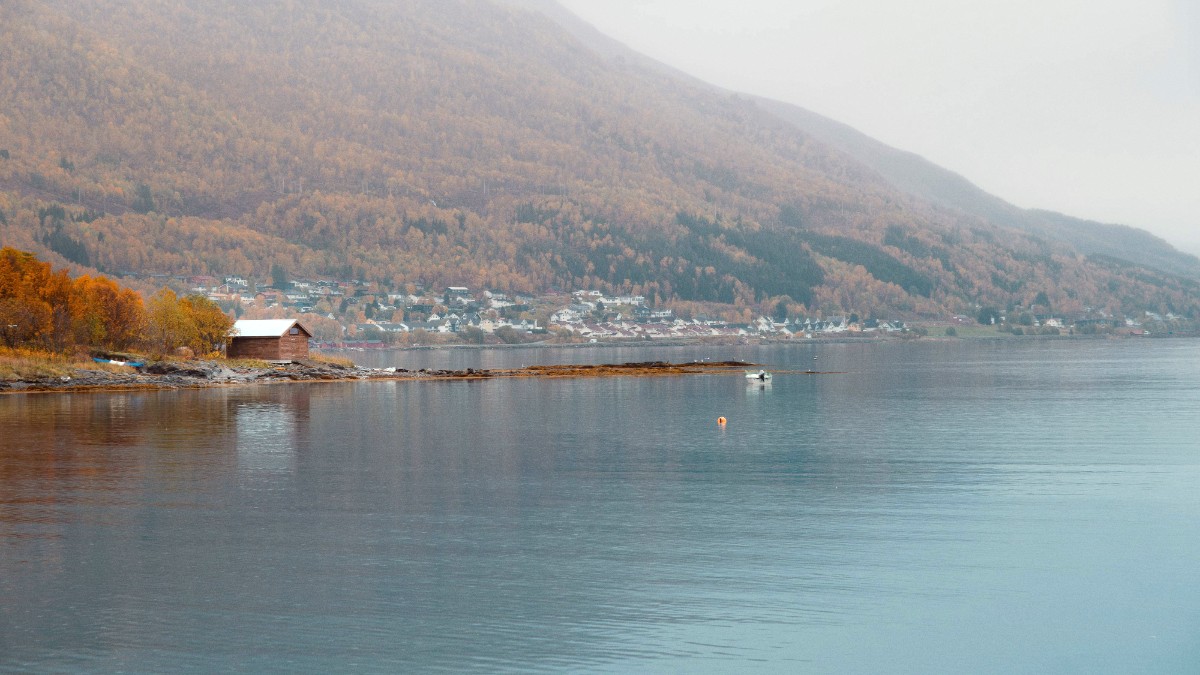
Northern Norway, Norway
Tromsø finds its place on the map at 69°40′33″N 18°57′40″E, roughly 350 kilometers (217 miles) north of the Arctic Circle. This location Tromsø its special character. The city center sits on Tromsøya, an island, with other urban areas spreading onto the mainland, specifically Tromsdalen, and the larger island of Kvaløya. Fjords, towering mountains, and numerous islands surround the city, shaping its subarctic coastal climate.
The island of Tromsøya a compact city experience, easy to navigate on foot. Across the sound, connected by an iconic bridge, Tromsdalen views back at the city and serves as the starting point for the Fjellheisen cable car, which ascends a nearby mountain. Kvaløya, the largest island near Tromsø, a more rugged, natural landscape with numerous fjords and mountains that invite exploration. Travelers often find themselves moving between these areas to experience the different sides of Tromsø, from its urban core to its wilder edges.
The specific latitude of Tromsø a major factor in its fame. Being well within the Arctic Circle means the city experiences both the Polar Night and the Midnight Sun, two phenomena that shape the entire year. During Polar Night, from late November to mid-January, the sun no rise above the horizon. This period an unique twilight glow around midday and long hours of darkness, perfect for Northern Lights viewing.
Conversely, from late May to late July, the Midnight Sun 24 hours of daylight, for activities at any hour. These distinct light conditions influence travel planning and the array of available experiences. Travelers consider how this geography transportation and accessibility. While the city center walkable, reaching the mainland or Kvaløya for attractions like the Arctic Cathedral, Fjellheisen, or more remote hiking trails often local buses, taxis, or a rental car.
Tromsø's story stretches back thousands of years, with evidence of human settlement from the Iron Age, reflecting a long history of human adaptation to the Arctic environment. Its designation as a town in 1794 by King Christian VII of Denmark-Norway marked a significant turning point, greater trading rights and fostering its growth. The 19th century saw Tromsø rise as a dominant hub for Arctic hunting and trapping.
By the early 20th century, Tromsø its enduring nickname: "Gateway to the Arctic." This not just a romantic title; it a practical reality. Many famous polar expeditions, including those led by Roald Amundsen and Fridtjof Nansen, used Tromsø as their starting point. Explorers provisioned their ships, hired experienced Arctic crew members, and launched their daring journeys into the unknown from its harbor.
Many polar expeditions launched from Tromsø.
Tromsø a pivotal starting point.
Tromsø briefly housed the Norwegian government in 1940.
Transition to education and research hub.
University of Tromsø continues polar studies.
Today, Tromsø a modern city that retains strong connections to its past. Its research institutions, specifically those focused on polar research, continue the legacy of exploration and discovery. The University of Tromsø – The Arctic University of Norway, founded in 1968, the world's northernmost university, drawing students and researchers globally.
Walk the streets where polar explorers once prepared, visit the Polar Museum to see artifacts from expeditions, or step into Ølhallen, a historic pub that served hunters and fishermen for generations.
The balance between its historical roots as a frontier town and its modern role as a research and cultural center an unique place to explore.
This snapshot a foundation, giving you a quick overview of what to expect and the core identity of this northern city.
Tromsø, as of 2023, a population of approximately 77,992 residents, according to Statistics Norway. This it the largest urban area in Northern Norway. The municipality covers a considerable area of 2,523.77 square kilometers (974.43 sq mi), though the city center quite compact. Its central elevation a modest 13 meters (43 ft) above sea level, mainly due to its island location.
The city world-renowned for two natural phenomena: the Northern Lights in winter and the Midnight Sun in summer. These define the peak tourist seasons and dictate many of the available activities. Beyond these, Tromsø's main industries reflect its historical evolution and modern focus. Tourism has grown significantly, a major economic driver, with a wide array of tours and services catering to international visitors.
Striking modern design landmark.
Panoramic views year-round.
Engages with polar research and marine life.
The Arctic Cathedral (Tromsdalen Kirke) perhaps the most recognizable landmark, with its striking, modern design. Polaria, an Arctic experience center, engages visitors with polar research and local marine life, including bearded seals. The Perspektivet Museum a different cultural lens, focusing on photography and local history.
Fjellheisen, the cable car, a quick ascent to Storsteinen mountain, panoramic views that spectacular year-round, whether under the Midnight Sun or the Northern Lights.